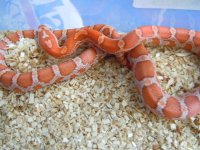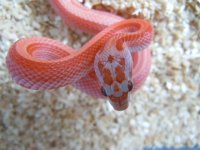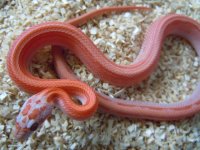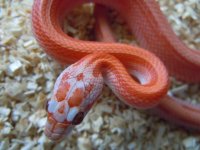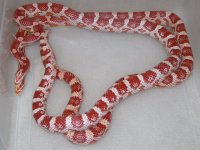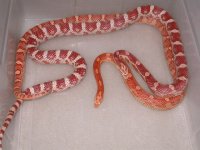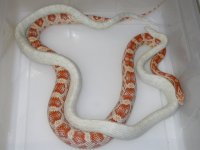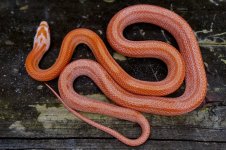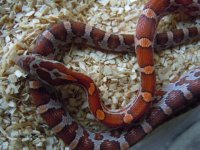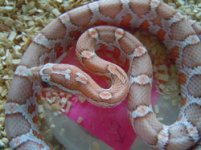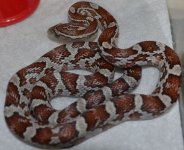-
Hello!
Either you have not registered on this site yet, or you are registered but have not logged in. In either case, you will not be able to use the full functionality of this site until you have registered, and then logged in after your registration has been approved.
Registration is FREE, so please register so you can participate instead of remaining a lurker....
Please be certain that the location field is correctly filled out when you register. All registrations that appear to be bogus will be rejected. Which means that if your location field does NOT match the actual location of your registration IP address, then your registration will be rejected.
Sorry about the strictness of this requirement, but it is necessary to block spammers and scammers at the door as much as possible.
You are using an out of date browser. It may not display this or other websites correctly.
You should upgrade or use an alternative browser.
You should upgrade or use an alternative browser.
HATCHLING THREAD (VOL. 3) 2014-2015 Edition
- Thread starter steve roylance
- Start date
steve roylance
New member
Thanks Jereme!!Man I go out town without a cpu and look at all he amazing stuff you put out! Super cool! I love the Amel Orchid the most but that Redcoat ERO project has me drooling! Can't wait to see them!
I just went through all 75 pages of this thread and my mind is blown! These are all amazing!!! I cant get over the little one with the heart on its head from wayyy back. and all these genetics are making my head spin!
Thanks so much!!
steve roylance
New member
So I think I may have solved the "Orange Thing" mystery. Of course I'm not 100% positive at this time, and I still am going to do breeding trials, but I might have solved this one.
I believe that the "Hypo" looking ones are in fact Kastanie Hypos. I think the added weird look they have is due to being Het Cinder. So it's my suspicion that these might be Hypo Kastanies Het Cinder.
The bigger they get, the more I see the Cinder influence. I didn't really see it when they were hatchling Ghost looking things. The colors are just so much brighter than typical Hypo Kastanies.
I believe that the "Hypo" looking ones are in fact Kastanie Hypos. I think the added weird look they have is due to being Het Cinder. So it's my suspicion that these might be Hypo Kastanies Het Cinder.
The bigger they get, the more I see the Cinder influence. I didn't really see it when they were hatchling Ghost looking things. The colors are just so much brighter than typical Hypo Kastanies.
Attachments
Last edited:
steve roylance
New member
Are all the offspring in these clutches het cinder? I forget the pairing.
They are all 66% Het Cinder.
Walter Smith
CRAZY BOUT' CORNS !!
So I think I may have solved the "Orange Thing" mystery. Of course I'm not 100% positive at this time, and I still am going to do breeding trials, but I'm might have solved this one.
I believe that the "Hypo" looking ones are in fact Kastanie Hypos. I think the added weird look they have is due to being Het Cinder. So it's my suspicion that these might be Hypo Kastanies Het Cinder.
The bigger they get, the more I see the Cinder influence. I didn't really see it when they were hatchling Ghost looking things. The colors are just so much brighter than typical Hypo Kastanies.
Steve,
I think you are onto something. I defiantly see the het Cinder marker on the Stripe and the Cinder gene does affect coloration as well.
Those breeding trials will help your theory for sure and I'm betting you are correct.
Walter
:crazy02:BOUT' CORNS !!
DuxorW
Derailer of Threads
Steve, I remember we talked about this a little over private message. Couldn't the orange things have cinder influence while still being part of the roughly 33% that aren't het cinder? I would expect the "cinder influence" people see when crossing cinder into other projects is polygenic locality influence and not the actual presence of cinder itself in het form. Otherwise wouldn't you be able to pick out het cinder animals in a clutch of possible hets? Although I also told you in private message that there are recessive alleles in other species that are able to cause a slight phenotype even in het form when other mutations are present...Walter's remark about stripes het cinder would be an example of that phenomenon. Walter, what does being het cinder do to striped animals?
Last edited:
Walter Smith
CRAZY BOUT' CORNS !!
Walter, what does being het cinder do to striped animals?
Dustin,
from my experience, it's not just Stripes you see it in, but in this case I find that most of the poss. hets I had (that proved to be actual Hets) have a certain look to them. Their scales have a frosty appearance.
I'm not saying that this is a 100% science because I do have het for Cinder corns that don't show this marker.
Here are a couple example pics.
Pic. 1) Both het Cinder
Pic. 2) female was poss het Cinder and proved to be
Pic. 3) female was poss het Cinder and proved to be
The first pic. of Steve's Stripe shows those "frosty" scales pretty well.
Walter
:crazy02:BOUT' CORNS !!
Attachments
Walter Smith
CRAZY BOUT' CORNS !!
Here is another "for instance"
I remember Nanci had a post in the for sale section, so I went and hunted it down.
This is a Amel Stripe POSS het Cinder and you can see the frosty "LOOK" it has.
I'm willing to bet that this one IS het Cinder. Do I know that for sure, absolutely not, but I would lean more to yes vs. no
Walter
:crazy02:BOUT' CORNS !!
I remember Nanci had a post in the for sale section, so I went and hunted it down.
This is a Amel Stripe POSS het Cinder and you can see the frosty "LOOK" it has.
I'm willing to bet that this one IS het Cinder. Do I know that for sure, absolutely not, but I would lean more to yes vs. no
Walter
:crazy02:BOUT' CORNS !!
Attachments
Walter Smith
CRAZY BOUT' CORNS !!
By frosted do you mean frosted saddles or the outlining on the scales outside the saddles?
ALL of the above and sometimes almost each and every individual scale and all of them combined give the certain "LOOK".
The pic. I posted of Nanci's shows it extremely well.
Walter
:crazy02:BOUT' CORNS !!
Walter Smith
CRAZY BOUT' CORNS !!
Do those that do not prove het cinder ever have this marker?
Not sure :shrugs:
I have not bred that many poss het Cinders, but the ones I did that proved to be het had this "LOOK"
Also, my Ultramel Miami was poss het, but she did not have this "LOOK" and DID prove to be het Cinder.
I would bet though that if it has the look, it will prove to be het.......again I'm not 100% sure on this, but I lean more to yes.
Walter
:crazy02:BOUT' CORNS !!
DuxorW
Derailer of Threads
Thanks. I know what you mean by the frosted look as I have a het hypo cinder and a hypo tessera het cinder that have this look, but I figured it was just the locality influence that comes along with cinder.
In other threads I've mentioned "crossing over" where chromosomes line up during meiosis and exchange fragments, resulting in unique combinations of alleles on the chromosomes of the gametes. When genes are close together, a crossover event is less likely to happen between them and so they tend to go into a gamete together. This is called linkage. So it's possible that when animals inherit the cinder allele they tend to actually inherit a cluster of alleles (called a haplotype) along with cinder that influence the phenotype. Those alleles should come from upper keys since that is where cinder came from. But I wouldn't really say upper keys corns have a frosted look, would you?
In other threads I've mentioned "crossing over" where chromosomes line up during meiosis and exchange fragments, resulting in unique combinations of alleles on the chromosomes of the gametes. When genes are close together, a crossover event is less likely to happen between them and so they tend to go into a gamete together. This is called linkage. So it's possible that when animals inherit the cinder allele they tend to actually inherit a cluster of alleles (called a haplotype) along with cinder that influence the phenotype. Those alleles should come from upper keys since that is where cinder came from. But I wouldn't really say upper keys corns have a frosted look, would you?
Last edited:
Walter Smith
CRAZY BOUT' CORNS !!
Those alleles should come from upper keys since that is where cinder came from. But I wouldn't really say upper keys corns have a frosted look, would you?
No I wouldn't. None of the (100's) Upper Keys Corns that I have ever seen have that look.
Walter
:crazy02:BOUT' CORNS !!
steve roylance
New member
Steve, I remember we talked about this a little over private message. Couldn't the orange things have cinder influence while still being part of the roughly 33% that aren't het cinder? I would expect the "cinder influence" people see when crossing cinder into other projects is polygenic locality influence and not the actual presence of cinder itself in het form. Otherwise wouldn't you be able to pick out het cinder animals in a clutch of possible hets? Although I also told you in private message that there are recessive alleles in other species that are able to cause a slight phenotype even in het form when other mutations are present...Walter's remark about stripes het cinder would be an example of that phenomenon. Walter, what does being het cinder do to striped animals?
Some of them had the light background "Miami Look" and some did not. Some looked like almost typical Kastanies.
This one for instance looks like a typical Kastanie.

